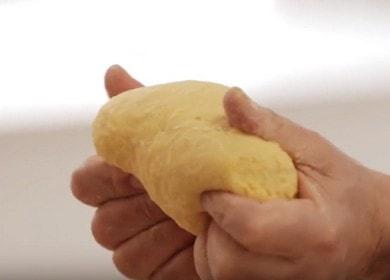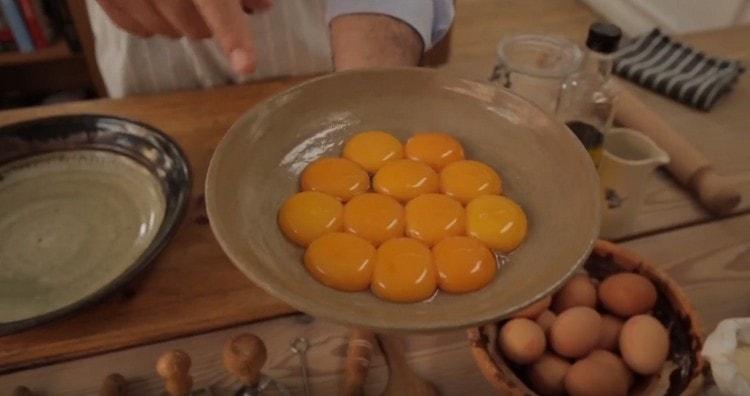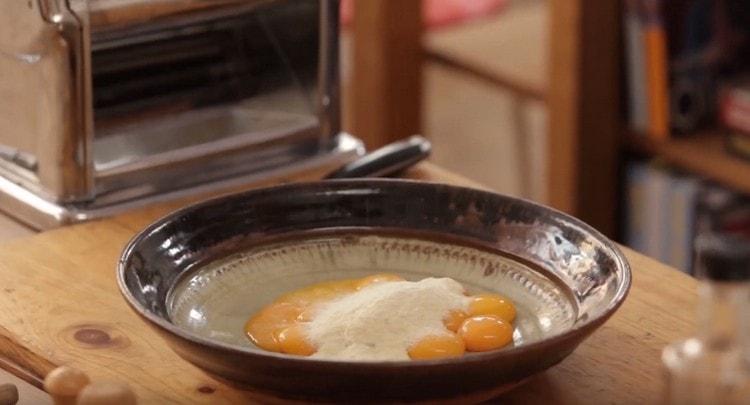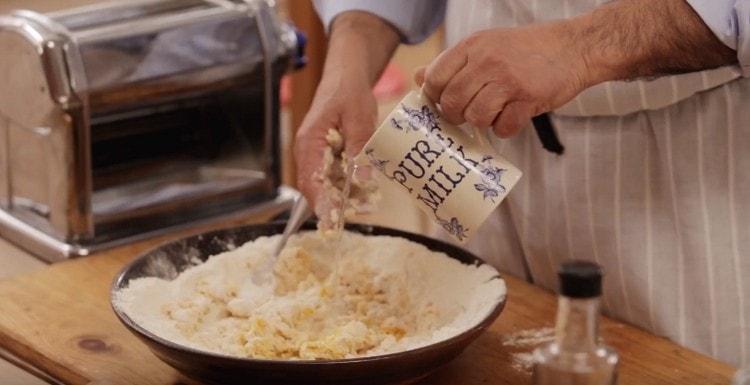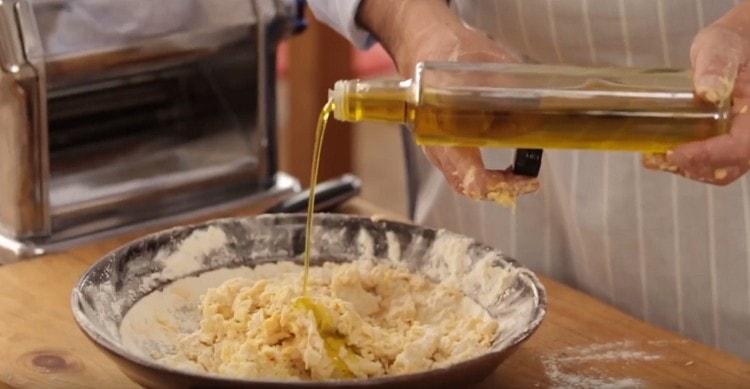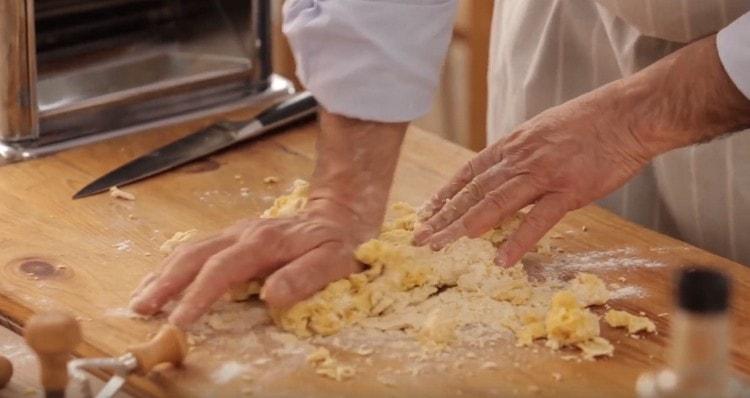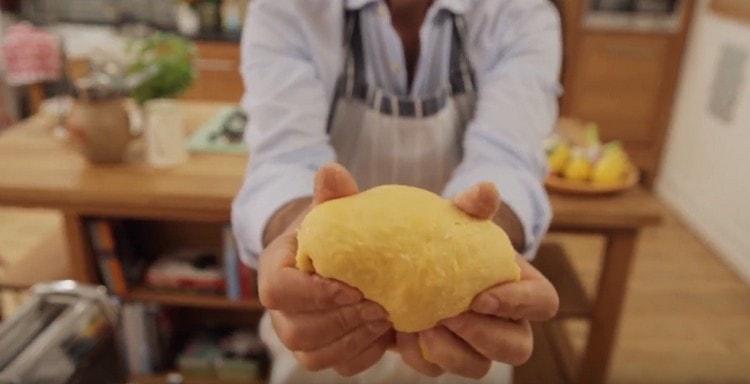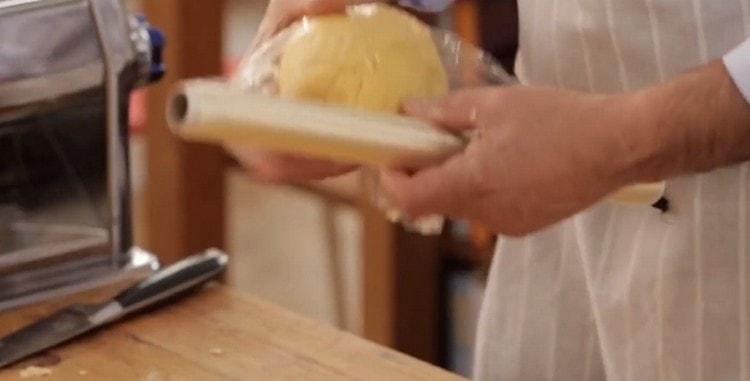Kitchen appliances and utensils: kitchen scales and other measuring accessories, fork, large bowl, cling film.
Ingredients
| Components | Proportions |
| egg | 12 pcs |
| durum wheat semolina | 75 g |
| fine flour | 400 g |
| bottled water | 100-150 ml |
| olive oil | 40 ml |
Step cooking
- We count 12 chicken eggs, after which we carefully separate the yolks from the proteins.

- We spread the yolks in a large container and add 75 g of semolina to them.

- Pour 400 g of premium flour there and pour the required amount of bottled water. On average, 100 to 150 ml of room temperature liquid is added.

- Stir the ingredients lightly, and then add about 40 ml of olive oil. The use of olive oil rather than sunflower oil will help make the dough pliable and very elastic. It is not recommended to knead egg dough on a draft - under its influence, it dries quite quickly.

- Initially, mix the ingredients with a fork, and when it becomes difficult, lay the dough on a flat surface and continue mixing with clean hands. At first, the dough will have a slightly granular structure, after which it gradually acquires a denser consistency. During manual kneading, from time to time we stretch the dough in different directions, and then forcefully throw it on the work surface. The whole kneading process will take about 10-15 minutes.

- Correct dough has a fairly solid structure, and at the same time is very smooth, elastic and uniform.

- Collect the kneaded dough into a ball, and then carefully wrap it in cling film. We send the dough to the refrigerator for at least half an hour, preferably an hour, so that it is well “rested”.

Useful information
To comply with all the rules of Italian cuisine, we offer recommendations regarding the length of the paste:
- bucatini - 24 cm;
- spaghetti - 24 cm;
- fusili - 4 cm;
- rigatoni - 4 cm;
- small Macaroni - up to 4 cm;
- large Macaroni - up to 5 cm.
The second thing you need to know is how to cook and serve pasta.
- Texture. First of all, what you should pay close attention to is the surface of the paste: it should be slightly rough to the touch, and not perfectly smooth. It is such a paste that best absorbs the sauce, which is certainly served with it.
- Colour. A true home-made product has a straw color. Some Italians dry the cooked pasta in the sun to give it a warmer shade.
- Water. To prepare the paste you will need a large capacious pan and a lot of bottled water - in this case, the paste will not stick together during the cooking process. The approximate ratio is 1 liter of water per 100 g of paste.
- Salt. The paste must be immersed exclusively in boiling salted water, while the salt must be salted immediately after boiling.
- Innings. Homemade pasta tastes best when served hot. In fact, this is easy to do - a few minutes before the pasta is ready, fill the serving plates with a little hot water, then quickly pour the liquid and dry the dishes with a dry towel.
Video recipe
The presented video demonstrates in sequence the process of kneading pasta with the famous Italian chef Gennaro Contaldo.
